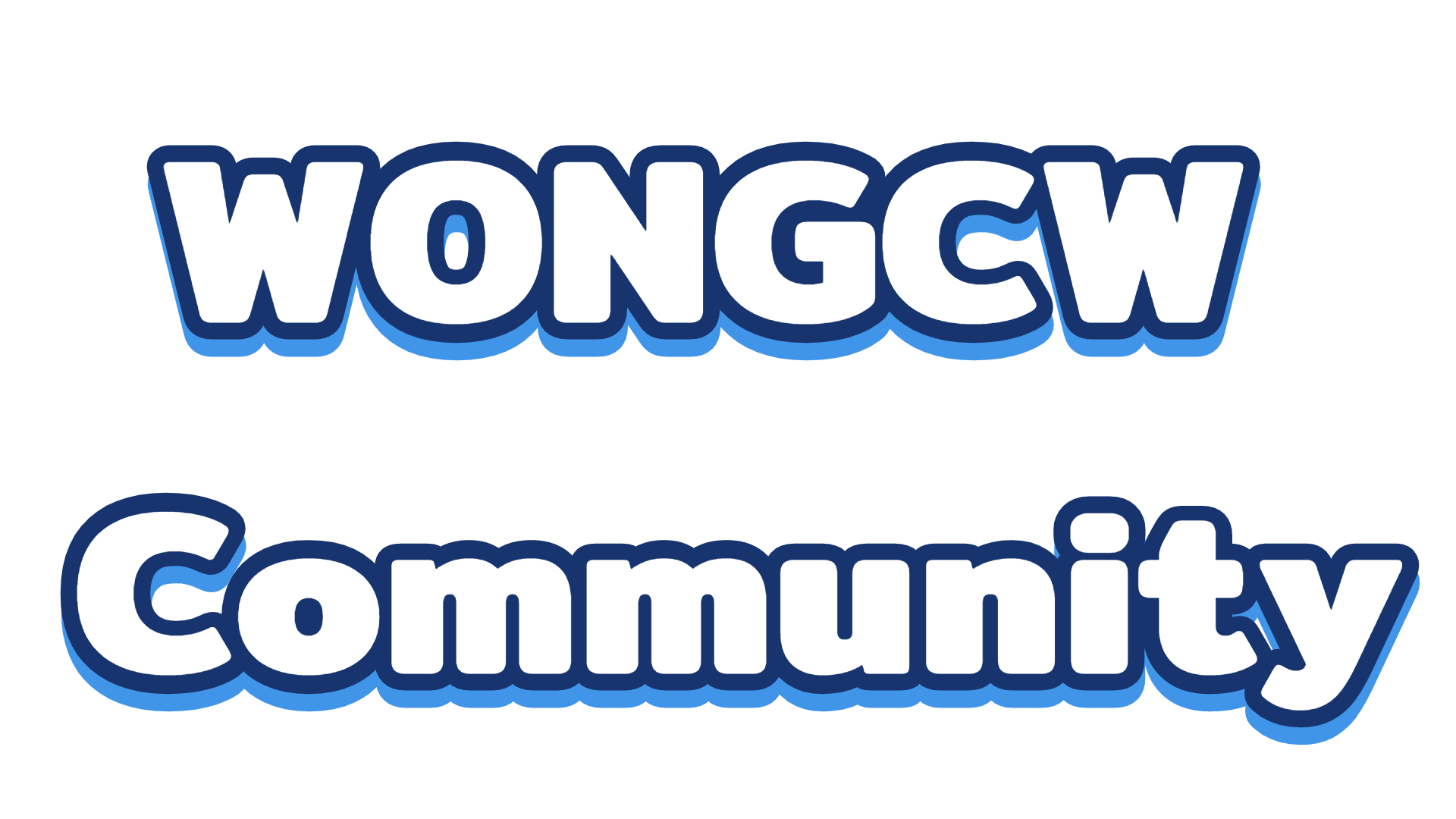-
News Feed
- EXPLORE
-
Pages
-
Groups
-
Events
-
Blogs
-
Marketplace
-
Offers
-
Jobs
-
Developers
Recent Updates
-
Masterbatch is a concentrated mixture of pigments or additives encapsulated in a carrier resin, used to colour or enhance plastic properties. It ensures uniform dispersion, improves processing efficiency, and reduces waste in manufacturing various plastic products like packaging, automotive parts, and consumer goods.
Read more: https://wemarketresearch.com/reports/masterbatch-market/1584
#Masterbatch #PlasticAdditives #ColorMasterbatch #PolymerSolutions #PlasticsIndustry #Manufacturing #InjectionMolding #PlasticProcessing #Pigments #PolymerCompounds #PlasticColoring #SustainablePlastics #AdditiveMasterbatch #IndustrialMaterials #PlasticInnovation
Masterbatch is a concentrated mixture of pigments or additives encapsulated in a carrier resin, used to colour or enhance plastic properties. It ensures uniform dispersion, improves processing efficiency, and reduces waste in manufacturing various plastic products like packaging, automotive parts, and consumer goods. Read more: https://wemarketresearch.com/reports/masterbatch-market/1584 #Masterbatch #PlasticAdditives #ColorMasterbatch #PolymerSolutions #PlasticsIndustry #Manufacturing #InjectionMolding #PlasticProcessing #Pigments #PolymerCompounds #PlasticColoring #SustainablePlastics #AdditiveMasterbatch #IndustrialMaterials #PlasticInnovation WEMARKETRESEARCH.COMMasterbatch Market Size, Share Trends, & Industry Forecast 2034Masterbatch market is expected to grow at 6.8% CAGR, reaching USD 11,632.85 Million by 2034 from USD 6,376.38 Million in 2024. Explore key trends and insights.0 Comments 0 Shares 15 Views 0 ReviewsPlease log in to like, share and comment!
WEMARKETRESEARCH.COMMasterbatch Market Size, Share Trends, & Industry Forecast 2034Masterbatch market is expected to grow at 6.8% CAGR, reaching USD 11,632.85 Million by 2034 from USD 6,376.38 Million in 2024. Explore key trends and insights.0 Comments 0 Shares 15 Views 0 ReviewsPlease log in to like, share and comment! -
A Mechanical Ventilator is a medical device that helps patients breathe by delivering oxygen and removing carbon dioxide. It is used in intensive care for conditions like respiratory failure, pneumonia, or surgery recovery. Ventilators can be invasive (via intubation) or non-invasive (via masks), supporting breathing when patients cannot do so independently.
Read more: https://wemarketresearch.com/reports/mechanical-ventilator-market/1594
#MechanicalVentilator #RespiratoryCare #CriticalCare #ICU #VentilatorSupport #MedicalDevices #PatientCare #HealthcareInnovation #EmergencyMedicine #BreathingSupport #PulmonaryCareA Mechanical Ventilator is a medical device that helps patients breathe by delivering oxygen and removing carbon dioxide. It is used in intensive care for conditions like respiratory failure, pneumonia, or surgery recovery. Ventilators can be invasive (via intubation) or non-invasive (via masks), supporting breathing when patients cannot do so independently. Read more: https://wemarketresearch.com/reports/mechanical-ventilator-market/1594 #MechanicalVentilator #RespiratoryCare #CriticalCare #ICU #VentilatorSupport #MedicalDevices #PatientCare #HealthcareInnovation #EmergencyMedicine #BreathingSupport #PulmonaryCare WEMARKETRESEARCH.COMMechanical Ventilator Market Share, Size, Forecast Report to 2034Mechanical Ventilator Market projected to reach $7.35 bn by 2034. Current trends and growth of the market future estimations from 2024 to 2034.0 Comments 0 Shares 9 Views 0 Reviews
WEMARKETRESEARCH.COMMechanical Ventilator Market Share, Size, Forecast Report to 2034Mechanical Ventilator Market projected to reach $7.35 bn by 2034. Current trends and growth of the market future estimations from 2024 to 2034.0 Comments 0 Shares 9 Views 0 Reviews -
Imaging Flow Cytometry Market Challenges, Analysis and Forecast to 2035
Market Overview
The Imaging Flow Cytometry Market growth is predicted to develop at a compound annual growth rate (CAGR) of 13.2% from 2025 to 2035, when global Imaging Flow Cytometry market forecast revenue is projected to reach USD 747.83 Million in 2035, based on an average growth pattern. The global Imaging Flow Cytometry Market Size is estimated to reach a value of USD 386.75 Million in 2025.
The Imaging Flow Cytometry Market is experiencing significant growth, driven by advancements in biotechnology, increasing research activities, and the rising prevalence of chronic diseases. Imaging flow cytometry is a powerful technology that combines the benefits of traditional flow cytometry with high-resolution imaging, providing deep cellular insights for research and clinical applications.
Read more: https://wemarketresearch.com/reports/imaging-flow-cytometry-market/1643
Imaging Flow Cytometry Market Size and Growth
The Imaging Flow Cytometry Market Size is expanding due to the growing demand for high-throughput and high-content cellular analysis. As research institutions, pharmaceutical companies, and diagnostic centers increasingly adopt imaging flow cytometry, market expansion is expected to continue. The global market is witnessing substantial investments in R&D, further driving growth in the sector.
Imaging Flow Cytometry Market Share and Competitive Landscape
The Imaging Flow Cytometry Market Share is dominated by key players engaged in technological advancements, mergers, and strategic partnerships. Companies focusing on innovative product development and expanding their distribution channels are gaining a competitive edge. The market features a mix of established players and emerging startups, all contributing to the increasing adoption of imaging flow cytometry in biomedical research and clinical diagnostics.
Market Players
Miltenyi Biotec
Stratedigm
Thermo Fisher Scientific
Apogee Flow Systems
Agilent Technologies
Sysmex Corporation
Coriolis Pharma
Merck Group
Danaher Corporation
Luminex Corporation
Beckman Coulter, Inc.
Bio-Rad Laboratories
BD (Becton, Dickinson and Company)
Sartorius AG
Cytek Biosciences
BioLegend, Inc.
Cell Signaling Technology
CellKraft Biotech Pvt. Ltd.
Market Segments
By Product Type
Instruments
Reagents & Consumables
Software & Services
By Application
Cancer Research & Oncology
Immunology
Stem Cell Research
Microbiology & Infectious Diseases
Drug Discovery & Development
Others
By Technology
Bead-based
Cell-based Flow Cytometry
Imaging Flow Cytometry Market Value and Trends
The Imaging Flow Cytometry Market Value is projected to witness steady growth, supported by the rising demand for advanced cell analysis techniques in oncology, immunology, and stem cell research. Emerging Imaging Flow Cytometry Market Trends include automation, integration with artificial intelligence, and the development of portable and cost-effective instruments. These trends are expected to reshape the market landscape in the coming years.
Imaging Flow Cytometry Market Potential and Future Outlook
The Imaging Flow Cytometry Market Potential remains vast, with increasing applications in drug discovery, personalized medicine, and disease monitoring. The expansion of research in immuno-oncology and cell-based therapies presents new opportunities for market players. Government initiatives supporting biomedical research and technological advancements further enhance market potential.
Imaging Flow Cytometry Market Forecast and Analysis
The Imaging Flow Cytometry Market Forecast suggests continued expansion, driven by advancements in automation and AI-powered imaging analysis. Analysts predict that the market will witness a surge in demand, particularly in academic and clinical research settings. A detailed Imaging Flow Cytometry Market Analysis highlights the role of innovation, regulatory approvals, and investment trends in shaping future growth prospects.
Conclusion
The Imaging Flow Cytometry Market is on a strong growth trajectory, propelled by technological advancements, increased research funding, and the growing need for precise cellular analysis. With continuous innovations and expanding applications, the market is poised to witness significant expansion in the coming years. Businesses and investors looking to capitalize on this market should stay updated on emerging trends and technological advancements to maximize opportunities.Imaging Flow Cytometry Market Challenges, Analysis and Forecast to 2035 Market Overview The Imaging Flow Cytometry Market growth is predicted to develop at a compound annual growth rate (CAGR) of 13.2% from 2025 to 2035, when global Imaging Flow Cytometry market forecast revenue is projected to reach USD 747.83 Million in 2035, based on an average growth pattern. The global Imaging Flow Cytometry Market Size is estimated to reach a value of USD 386.75 Million in 2025. The Imaging Flow Cytometry Market is experiencing significant growth, driven by advancements in biotechnology, increasing research activities, and the rising prevalence of chronic diseases. Imaging flow cytometry is a powerful technology that combines the benefits of traditional flow cytometry with high-resolution imaging, providing deep cellular insights for research and clinical applications. Read more: https://wemarketresearch.com/reports/imaging-flow-cytometry-market/1643 Imaging Flow Cytometry Market Size and Growth The Imaging Flow Cytometry Market Size is expanding due to the growing demand for high-throughput and high-content cellular analysis. As research institutions, pharmaceutical companies, and diagnostic centers increasingly adopt imaging flow cytometry, market expansion is expected to continue. The global market is witnessing substantial investments in R&D, further driving growth in the sector. Imaging Flow Cytometry Market Share and Competitive Landscape The Imaging Flow Cytometry Market Share is dominated by key players engaged in technological advancements, mergers, and strategic partnerships. Companies focusing on innovative product development and expanding their distribution channels are gaining a competitive edge. The market features a mix of established players and emerging startups, all contributing to the increasing adoption of imaging flow cytometry in biomedical research and clinical diagnostics. Market Players Miltenyi Biotec Stratedigm Thermo Fisher Scientific Apogee Flow Systems Agilent Technologies Sysmex Corporation Coriolis Pharma Merck Group Danaher Corporation Luminex Corporation Beckman Coulter, Inc. Bio-Rad Laboratories BD (Becton, Dickinson and Company) Sartorius AG Cytek Biosciences BioLegend, Inc. Cell Signaling Technology CellKraft Biotech Pvt. Ltd. Market Segments By Product Type Instruments Reagents & Consumables Software & Services By Application Cancer Research & Oncology Immunology Stem Cell Research Microbiology & Infectious Diseases Drug Discovery & Development Others By Technology Bead-based Cell-based Flow Cytometry Imaging Flow Cytometry Market Value and Trends The Imaging Flow Cytometry Market Value is projected to witness steady growth, supported by the rising demand for advanced cell analysis techniques in oncology, immunology, and stem cell research. Emerging Imaging Flow Cytometry Market Trends include automation, integration with artificial intelligence, and the development of portable and cost-effective instruments. These trends are expected to reshape the market landscape in the coming years. Imaging Flow Cytometry Market Potential and Future Outlook The Imaging Flow Cytometry Market Potential remains vast, with increasing applications in drug discovery, personalized medicine, and disease monitoring. The expansion of research in immuno-oncology and cell-based therapies presents new opportunities for market players. Government initiatives supporting biomedical research and technological advancements further enhance market potential. Imaging Flow Cytometry Market Forecast and Analysis The Imaging Flow Cytometry Market Forecast suggests continued expansion, driven by advancements in automation and AI-powered imaging analysis. Analysts predict that the market will witness a surge in demand, particularly in academic and clinical research settings. A detailed Imaging Flow Cytometry Market Analysis highlights the role of innovation, regulatory approvals, and investment trends in shaping future growth prospects. Conclusion The Imaging Flow Cytometry Market is on a strong growth trajectory, propelled by technological advancements, increased research funding, and the growing need for precise cellular analysis. With continuous innovations and expanding applications, the market is poised to witness significant expansion in the coming years. Businesses and investors looking to capitalize on this market should stay updated on emerging trends and technological advancements to maximize opportunities. WEMARKETRESEARCH.COMImaging Flow Cytometry Market Size, Share, Growth & ForecastImaging Flow Cytometry Market to grow at a 13.2% CAGR from 2025 to 2035, reaching USD 747.83 Million in 2035, up from USD 386.75 Million in 2025.0 Comments 0 Shares 41 Views 0 Reviews
WEMARKETRESEARCH.COMImaging Flow Cytometry Market Size, Share, Growth & ForecastImaging Flow Cytometry Market to grow at a 13.2% CAGR from 2025 to 2035, reaching USD 747.83 Million in 2035, up from USD 386.75 Million in 2025.0 Comments 0 Shares 41 Views 0 Reviews -
Dark Kitchen Market Overview
Dark Kitchen Market size was valued at USD 60.59 billion in 2023 and is estimated to reach a value of USD 253.95 billion by 2035 with a CAGR of 12.9% during the forecast period 2024-2035. A dark kitchen is a professional food preparation and cooking facility set up for delivery-only services. Unlike traditional restaurants, dark kitchens optimize costs by eliminating dine-in spaces, focusing on efficient delivery models. This shift has led to substantial Dark Kitchen Market Growth, with more businesses adopting this model to maximize profits and streamline operations.
Dark Kitchen Market Size and Share
The Dark Kitchen Market Size has witnessed exponential growth, driven by increasing consumer preference for online food delivery. With the rise of food delivery platforms such as Uber Eats, DoorDash, and Zomato, more restaurateurs and food brands are leveraging dark kitchens to expand their reach. The Dark Kitchen Market Share is dominated by major players and startups alike, contributing to a competitive and rapidly evolving industry.
Read more: https://wemarketresearch.com/reports/dark-kitchen-market/1540
Market Players
Kitchen United
Rebel Foods
DoorDash Kitchen
Zuul Kitchen
Keatz
Kitopi
Ghost Kitchen Orlando
Dahmakan
Starbucks (Star Kitchen)
Cloud Kitchen
Market Segments
By Type
Standalone Dark Kitchens
Shared Kitchen Spaces
Virtual Brands
By Operational Model
Franchise-Based
Independent Operators
By End User
Consumer Segment
Business-to-Business (B2B)
Dark Kitchen Market Trends
Technological Integration: Advanced technologies such as AI-driven order management, smart kitchen automation, and data analytics are revolutionizing dark kitchen operations.
Multi-Brand Cloud Kitchens: Companies are utilizing shared kitchen spaces to operate multiple virtual brands under one roof, maximizing efficiency and profitability.
Sustainability Practices: Eco-friendly packaging, waste reduction initiatives, and sustainable sourcing are gaining prominence in the dark kitchen industry.
Expansion of Franchise Models: Major food brands are investing in dark kitchens as a cost-effective expansion strategy without the need for physical restaurant locations.
Hyperlocal Delivery Strategies: Dark kitchens are focusing on hyperlocal delivery zones to reduce delivery time and improve customer satisfaction.
Dark Kitchen Market Price and Investment Outlook
The Dark Kitchen Market Price varies depending on factors such as location, kitchen size, technology integration, and operational requirements. Entrepreneurs can set up dark kitchens at a fraction of the cost of traditional restaurants, making them an attractive investment opportunity. Additionally, venture capital firms and food-tech companies are investing heavily in the Dark Kitchen Market, fueling further growth and innovation.
Dark Kitchen Market Forecast
The Dark Kitchen Market Forecast indicates sustained growth, driven by changing consumer behaviors and technological advancements. Market analysts predict a significant rise in dark kitchen establishments, with an increased focus on automation and AI-powered logistics. As food delivery continues to dominate the dining industry, dark kitchens are expected to play a pivotal role in shaping its future.
Conclusion
The Dark Kitchen Market is poised for remarkable expansion, driven by the growing demand for online food delivery and advancements in kitchen automation. With lower operational costs, higher scalability, and enhanced efficiency, dark kitchens present a lucrative opportunity for restaurateurs, investors, and food-tech entrepreneurs. As the industry evolves, embracing new Dark Kitchen Market Trends will be essential for staying ahead in this dynamic market.Dark Kitchen Market Overview Dark Kitchen Market size was valued at USD 60.59 billion in 2023 and is estimated to reach a value of USD 253.95 billion by 2035 with a CAGR of 12.9% during the forecast period 2024-2035. A dark kitchen is a professional food preparation and cooking facility set up for delivery-only services. Unlike traditional restaurants, dark kitchens optimize costs by eliminating dine-in spaces, focusing on efficient delivery models. This shift has led to substantial Dark Kitchen Market Growth, with more businesses adopting this model to maximize profits and streamline operations. Dark Kitchen Market Size and Share The Dark Kitchen Market Size has witnessed exponential growth, driven by increasing consumer preference for online food delivery. With the rise of food delivery platforms such as Uber Eats, DoorDash, and Zomato, more restaurateurs and food brands are leveraging dark kitchens to expand their reach. The Dark Kitchen Market Share is dominated by major players and startups alike, contributing to a competitive and rapidly evolving industry. Read more: https://wemarketresearch.com/reports/dark-kitchen-market/1540 Market Players Kitchen United Rebel Foods DoorDash Kitchen Zuul Kitchen Keatz Kitopi Ghost Kitchen Orlando Dahmakan Starbucks (Star Kitchen) Cloud Kitchen Market Segments By Type Standalone Dark Kitchens Shared Kitchen Spaces Virtual Brands By Operational Model Franchise-Based Independent Operators By End User Consumer Segment Business-to-Business (B2B) Dark Kitchen Market Trends Technological Integration: Advanced technologies such as AI-driven order management, smart kitchen automation, and data analytics are revolutionizing dark kitchen operations. Multi-Brand Cloud Kitchens: Companies are utilizing shared kitchen spaces to operate multiple virtual brands under one roof, maximizing efficiency and profitability. Sustainability Practices: Eco-friendly packaging, waste reduction initiatives, and sustainable sourcing are gaining prominence in the dark kitchen industry. Expansion of Franchise Models: Major food brands are investing in dark kitchens as a cost-effective expansion strategy without the need for physical restaurant locations. Hyperlocal Delivery Strategies: Dark kitchens are focusing on hyperlocal delivery zones to reduce delivery time and improve customer satisfaction. Dark Kitchen Market Price and Investment Outlook The Dark Kitchen Market Price varies depending on factors such as location, kitchen size, technology integration, and operational requirements. Entrepreneurs can set up dark kitchens at a fraction of the cost of traditional restaurants, making them an attractive investment opportunity. Additionally, venture capital firms and food-tech companies are investing heavily in the Dark Kitchen Market, fueling further growth and innovation. Dark Kitchen Market Forecast The Dark Kitchen Market Forecast indicates sustained growth, driven by changing consumer behaviors and technological advancements. Market analysts predict a significant rise in dark kitchen establishments, with an increased focus on automation and AI-powered logistics. As food delivery continues to dominate the dining industry, dark kitchens are expected to play a pivotal role in shaping its future. Conclusion The Dark Kitchen Market is poised for remarkable expansion, driven by the growing demand for online food delivery and advancements in kitchen automation. With lower operational costs, higher scalability, and enhanced efficiency, dark kitchens present a lucrative opportunity for restaurateurs, investors, and food-tech entrepreneurs. As the industry evolves, embracing new Dark Kitchen Market Trends will be essential for staying ahead in this dynamic market. WEMARKETRESEARCH.COMDark Kitchen Market Size, Share, Trends, Forecast 2024-2034Dark Kitchen market size was USD 60.59 Billion in 2023, estimated to reach USD 253.95 Billion by 2035 with a CAGR of 12.9% during 2024-2035 forecast period.0 Comments 0 Shares 31 Views 0 Reviews
WEMARKETRESEARCH.COMDark Kitchen Market Size, Share, Trends, Forecast 2024-2034Dark Kitchen market size was USD 60.59 Billion in 2023, estimated to reach USD 253.95 Billion by 2035 with a CAGR of 12.9% during 2024-2035 forecast period.0 Comments 0 Shares 31 Views 0 Reviews -
The Biodegradable Plastic Additives Market is expected to grow at an annual rate of 9.2% from 2024 to 2034. By 2034, the market size is projected to reach USD 5.27 billion. In 2024, the market revenue is estimated to be USD 2.86 billion.
Read more: https://wemarketresearch.com/reports/biodegradable-plastic-additives-market/1598
#BiodegradablePlastics #SustainablePackaging #EcoFriendly #GreenTechnology #PlasticAdditives #Bioplastics #SustainableMaterialsThe Biodegradable Plastic Additives Market is expected to grow at an annual rate of 9.2% from 2024 to 2034. By 2034, the market size is projected to reach USD 5.27 billion. In 2024, the market revenue is estimated to be USD 2.86 billion. Read more: https://wemarketresearch.com/reports/biodegradable-plastic-additives-market/1598 #BiodegradablePlastics #SustainablePackaging #EcoFriendly #GreenTechnology #PlasticAdditives #Bioplastics #SustainableMaterials WEMARKETRESEARCH.COMBiodegradable Plastic Additives Market Size, Growth & ForecastBiodegradable Plastic Additives Market valued at USD 2.86B in 2024, projected to reach USD 5.27B by 2034, growing at a 9.2% CAGR.0 Comments 0 Shares 11 Views 0 Reviews
WEMARKETRESEARCH.COMBiodegradable Plastic Additives Market Size, Growth & ForecastBiodegradable Plastic Additives Market valued at USD 2.86B in 2024, projected to reach USD 5.27B by 2034, growing at a 9.2% CAGR.0 Comments 0 Shares 11 Views 0 Reviews -
The Carmustine Market is expected to grow at an average annual rate of 2.84% from 2024 to 2034. By 2034, it is projected to reach USD 1.03 billion. In 2024, the market value is estimated to be USD 0.78 billion.
Read More: https://wemarketresearch.com/reports/global-carmustine-market/1509
#Carmustine #CarmustineMarket #PharmaceuticalIndustry #OncologyDrugs #HealthcareMarket #CancerTreatmentThe Carmustine Market is expected to grow at an average annual rate of 2.84% from 2024 to 2034. By 2034, it is projected to reach USD 1.03 billion. In 2024, the market value is estimated to be USD 0.78 billion. Read More: https://wemarketresearch.com/reports/global-carmustine-market/1509 #Carmustine #CarmustineMarket #PharmaceuticalIndustry #OncologyDrugs #HealthcareMarket #CancerTreatment WEMARKETRESEARCH.COMGlobal Carmustine Market Size, Emerging Trends, Growth Opportunities and ForecastGlobal Carmustine Market is estimated to reach USD 1.03 Billion with a CAGR of 2.84% by 2034. Segmented by type, Application, Distribution Channel, End User and Region.0 Comments 0 Shares 18 Views 0 Reviews
WEMARKETRESEARCH.COMGlobal Carmustine Market Size, Emerging Trends, Growth Opportunities and ForecastGlobal Carmustine Market is estimated to reach USD 1.03 Billion with a CAGR of 2.84% by 2034. Segmented by type, Application, Distribution Channel, End User and Region.0 Comments 0 Shares 18 Views 0 Reviews -
The Trichloroethylene Market is expected to grow at a compound annual growth rate (CAGR) of 2.9% from 2025 to 2035. By 2035, the global Trichloroethylene market revenue is projected to reach USD 612.46 million, following an average growth trajectory. In 2025, the market size is estimated to be valued at USD 461.58 million.
Read more: https://wemarketresearch.com/reports/trichloroethylene-market/1635The Trichloroethylene Market is expected to grow at a compound annual growth rate (CAGR) of 2.9% from 2025 to 2035. By 2035, the global Trichloroethylene market revenue is projected to reach USD 612.46 million, following an average growth trajectory. In 2025, the market size is estimated to be valued at USD 461.58 million. Read more: https://wemarketresearch.com/reports/trichloroethylene-market/1635 WEMARKETRESEARCH.COMTrichloroethylene Market Insights, Trends & Growth Forecast 2035Trichloroethylene Market is projected to grow at a 2.9% CAGR from 2025 to 2035, revenue rising from USD 461.58M in 2025 to USD 612.46M by 2035.0 Comments 0 Shares 12 Views 0 Reviews
WEMARKETRESEARCH.COMTrichloroethylene Market Insights, Trends & Growth Forecast 2035Trichloroethylene Market is projected to grow at a 2.9% CAGR from 2025 to 2035, revenue rising from USD 461.58M in 2025 to USD 612.46M by 2035.0 Comments 0 Shares 12 Views 0 Reviews -
The Hypersonic Technology Market is predicted to develop at a compound annual growth rate (CAGR) of 9.5% from 2024 to 2034, when it is projected to reach USD 14,576.52 Million in 2034, based on an average growth pattern. The market is estimated to reach a value of USD 5,742.86 Million in 2024.
Read more: https://wemarketresearch.com/reports/hypersonic-technology-market/1572The Hypersonic Technology Market is predicted to develop at a compound annual growth rate (CAGR) of 9.5% from 2024 to 2034, when it is projected to reach USD 14,576.52 Million in 2034, based on an average growth pattern. The market is estimated to reach a value of USD 5,742.86 Million in 2024. Read more: https://wemarketresearch.com/reports/hypersonic-technology-market/1572 WEMARKETRESEARCH.COMHypersonic Technology Market Size, Share & Growth OpportunitiesThe Hypersonic Technology market is expected to grow at a 9.5% CAGR, reaching USD 14,576.52 Million by 2034, up from USD 5,742.86 Million in 2024.0 Comments 0 Shares 7 Views 0 Reviews
WEMARKETRESEARCH.COMHypersonic Technology Market Size, Share & Growth OpportunitiesThe Hypersonic Technology market is expected to grow at a 9.5% CAGR, reaching USD 14,576.52 Million by 2034, up from USD 5,742.86 Million in 2024.0 Comments 0 Shares 7 Views 0 Reviews -
The Deepfake AI market is predicted to develop at a compound annual growth rate (CAGR) of 41.6% from 2024 to 2034, when it is projected to reach USD 8,976.15 Million in 2034, based on an average growth pattern. The market is estimated to reach a value of USD 662.83 Million in 2024.
Read more: https://wemarketresearch.com/reports/deepfake-ai-market/1577The Deepfake AI market is predicted to develop at a compound annual growth rate (CAGR) of 41.6% from 2024 to 2034, when it is projected to reach USD 8,976.15 Million in 2034, based on an average growth pattern. The market is estimated to reach a value of USD 662.83 Million in 2024. Read more: https://wemarketresearch.com/reports/deepfake-ai-market/1577 WEMARKETRESEARCH.COMGlobal Deepfake AI Market Size, Share and Forecasts To 2034Deepfake AI market is expected to grow at 41.6% CAGR from 2024 to 2034, rising from USD 662.83 million in 2024 to USD 8.98 billion by 2034.0 Comments 0 Shares 9 Views 0 Reviews
WEMARKETRESEARCH.COMGlobal Deepfake AI Market Size, Share and Forecasts To 2034Deepfake AI market is expected to grow at 41.6% CAGR from 2024 to 2034, rising from USD 662.83 million in 2024 to USD 8.98 billion by 2034.0 Comments 0 Shares 9 Views 0 Reviews -
The Maternal Supplement market is predicted to develop at a compound annual growth rate (CAGR) of 8.6% from 2024 to 2034, when it is projected to reach USD 43,976.15 Million in 2034, based on an average growth pattern. The market is estimated to reach a value of USD 24,628.83 Million in 2024.
Read More: https://wemarketresearch.com/reports/maternal-supplement-market/1581The Maternal Supplement market is predicted to develop at a compound annual growth rate (CAGR) of 8.6% from 2024 to 2034, when it is projected to reach USD 43,976.15 Million in 2034, based on an average growth pattern. The market is estimated to reach a value of USD 24,628.83 Million in 2024. Read More: https://wemarketresearch.com/reports/maternal-supplement-market/1581 WEMARKETRESEARCH.COMMaternal Supplement Market Size, Share & Outlook 2034Maternal Supplement market to grow at 8.6% CAGR, reaching USD 43,976.15M by 2034, up from USD 24,628.83M in 2024, based on an average growth pattern.0 Comments 0 Shares 8 Views 0 Reviews
WEMARKETRESEARCH.COMMaternal Supplement Market Size, Share & Outlook 2034Maternal Supplement market to grow at 8.6% CAGR, reaching USD 43,976.15M by 2034, up from USD 24,628.83M in 2024, based on an average growth pattern.0 Comments 0 Shares 8 Views 0 Reviews
More Stories


